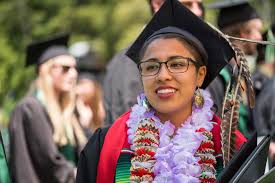What exactly is Student Loan Forgiveness?
A Student Loan Forgiveness program is any country program that was created under the College Cost Reduction Act for the purpose of helping and assisting students who have loans.
This program is not available in every country, but some countries use it to assist their citizens; however, most countries use it to reduce student loan rates, which also reduces poverty rates in that country.
Student loan forgiveness
Date the Student Loan Forgiveness Program was established
This program began in the early 2000s with the goal of giving students who have loans or are unable to repay their loans freedom.
Student loan forgiveness may appear too good to be true, but it is legal and available through free government programs.
The following options are only available to borrowers of federal student loans. Some programs have very specific requirements that make it difficult to qualify, but the vast majority of borrowers are eligible for income-based repayment plans.
List of student loan forgiveness programs available Repayment Forgiveness Based on Income:
The federal government offers four primary income-based repayment plans, each of which allows you to cap your monthly payments at a certain percentage of your monthly income.
If you participate in one of these programs, depending on the program, your remaining loan balance will be forgiven after 20 or 25 years.
These plans are more beneficial for people who have high loan balances in relation to their income. According to the National Consumer Law Center, only 32 borrowers receive income-based forgiveness.
This reimbursement is tax-free from December 2020 to the end of 2025 as part of the March 2021 US bailout. Most borrowers, however, will not be eligible for income-based repayment until the early 2030s.
Nurse Student Loan Repayment Program:
Nurses with student debt have several debt-forgiveness options. Civil Service Loan Forgiveness, Perkins Loan Forgiveness, and NURSE Corps Repayment Program loans, which assist qualified medical students in repaying up to 85% of unpaid college debt.
For most nurses, the most likely option is to forgive civil service loans; very few borrowers have Perkins loans, and the NURSE Corps program is highly competitive.
Other Student Loan Repayment Programs:
There may be national or institutional student loan repayment assistance programs for public service occupations.
The National Institutes of Health, for example, provides up to $35,000 per year in financial assistance to medical professionals designated by the institutes to conduct research.
State-Sponsored Repayment Programs:
The government funds a debt repayment assistance program. Some states offer debt repayment assistance programs to licensed teachers, nurses, doctors, and attorneys.
For example, Mississippi’s Teacher Loan Repayment Program will reimburse teachers with a specific teaching license up to $3,000 per year in college student loans for each year of full-time teaching in a specific geographic area or subject for up to four years. Contact your state’s department of higher education to see if you qualify for a program.
Loan Forgiveness for Government Employees:
Public Service Loan Forgiveness is available to government employees and nonprofits who qualify for federal student loans. Eligible borrowers can view their remaining loan balance tax-free after repaying 120 qualifying loans.
Through a limited waiver, the Department of Education extends payments on federal student loans that qualify for PSLF until December 31, 2022. Payments on FFEL and Perkins loans, as well as delinquent payments and payments made under any repayment plan, are now eligible.
Military Student Loan Forgiveness and Assistance:
Personnel from the Army, Navy, Air Force, National Guard, and Coast Guard may be eligible for their own debt relief programs.
For example, eligible soldiers and officers in the National Guard can receive up to $50,000 in Student Loan Repayment Program funds to help pay off federal student loans.
Before you apply for your first student loan, here are six things you should know.
1. Give federal loans precedence over private loans.
Loans are classified into two types: federal and private. First, fill out the FAFSA to apply for federal loans. They are preferable because they do not require a credit history to qualify and provide income-driven repayment plans and forgiveness that private loans do not.
You can choose between two types of federal loans: unsubsidized and subsidized. Subsidized loans, which are available to deserving students, do not accrue interest while you are enrolled. Unsubsidized loans are the same as subsidized loans.
Only take out a private loan after you have exhausted all federal assistance.
2. Borrow only what you require and can repay.
Independent undergraduate students can borrow up to $12,500 per year, for a total of $57,500 in federal student loans, while dependent undergraduate students can borrow up to $7,500 per year, for a total of $31,000 in federal student loans. Borrowers of private loans are limited to the cost of attendance minus any unpaid financial aid (tuition, fees, room and board, books, transportation, and personal expenses).
Borrow enough money to keep your monthly payments at around 10% of your projected monthly after-tax income. If you expect to earn $50,000 per year, your monthly student loan payments should not exceed $279, implying that you can borrow approximately $26,000 at current rates.
Consult the U.S. Department of Labor’s Occupation Outlook Handbook to forecast future earnings. Then, use a student loan affordability calculator to estimate payments.
Your school should explain how to accept and reject financial aid in your award letter. Please contact your financial aid office if you are unsure how to proceed.
“We’re not scary people,” says Jill Rayner, director of financial aid at the University of North Georgia in Dahlonega, Georgia. “We really want students and families to come in and talk with us so that we can help them strategize,” says the director.
3. You will be charged loan fees and interest.
You will owe more than the amount borrowed due to loan fees and interest.
A loan fee, which is typically a percentage of the total loan amount, is required for all federal loans. For federal direct undergraduate student loans, the current loan fee is 1.057%.
You will also be required to pay daily interest on your loan, which will be added to the total amount owed when repayment begins. The current fixed federal undergraduate loan interest rate is 4.99%, but it varies throughout the year. Your interest rate will be determined by the credit history of you or your co-signer.






